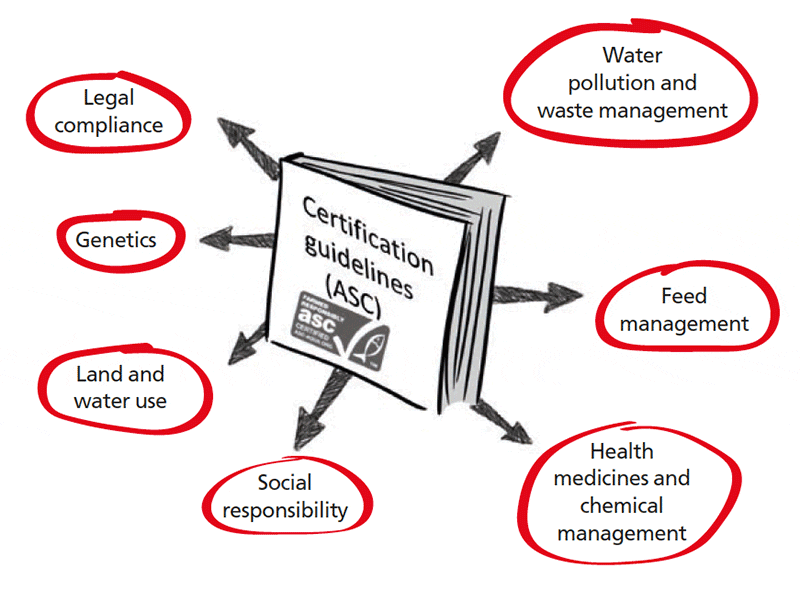
One of the most widely used certification programs the Aquaculture Stewardship Council (ASC) is based on seven main categories (Figure 1).

Figure 1. The seven categories on which the Aquaculture Stewardship Council (ASC) certification for Pangasius farms are based.
Of these, three important categories relate to feed efficiency, waste management and disease control. Within these topics, certification bodies have established specific targets in terms of feed conversion ratio (FCR), waste discharges and water pollution, and the use of medicines as prophylactic measures. These targets present challenges that farmers must face in order to comply with such certification.
Certification has its benefits
Farmers are also aware that by complying with such targets, sustainability certification can offer a premium price and allow exports to higher value markets. Feed additives can be used as a tool for feed mill integrators and farmers to achieve the demanding targets imposed by certification organizations.
The use of organics acids, phytogenics, pre- and probiotics, as well as mycotoxin management, can help the aquaculture industry accomplish some of the requirements for certification process without any profit loss.
To read the rest of this article and the Pangasius catfish case study, please visit the Biomin website, here.



